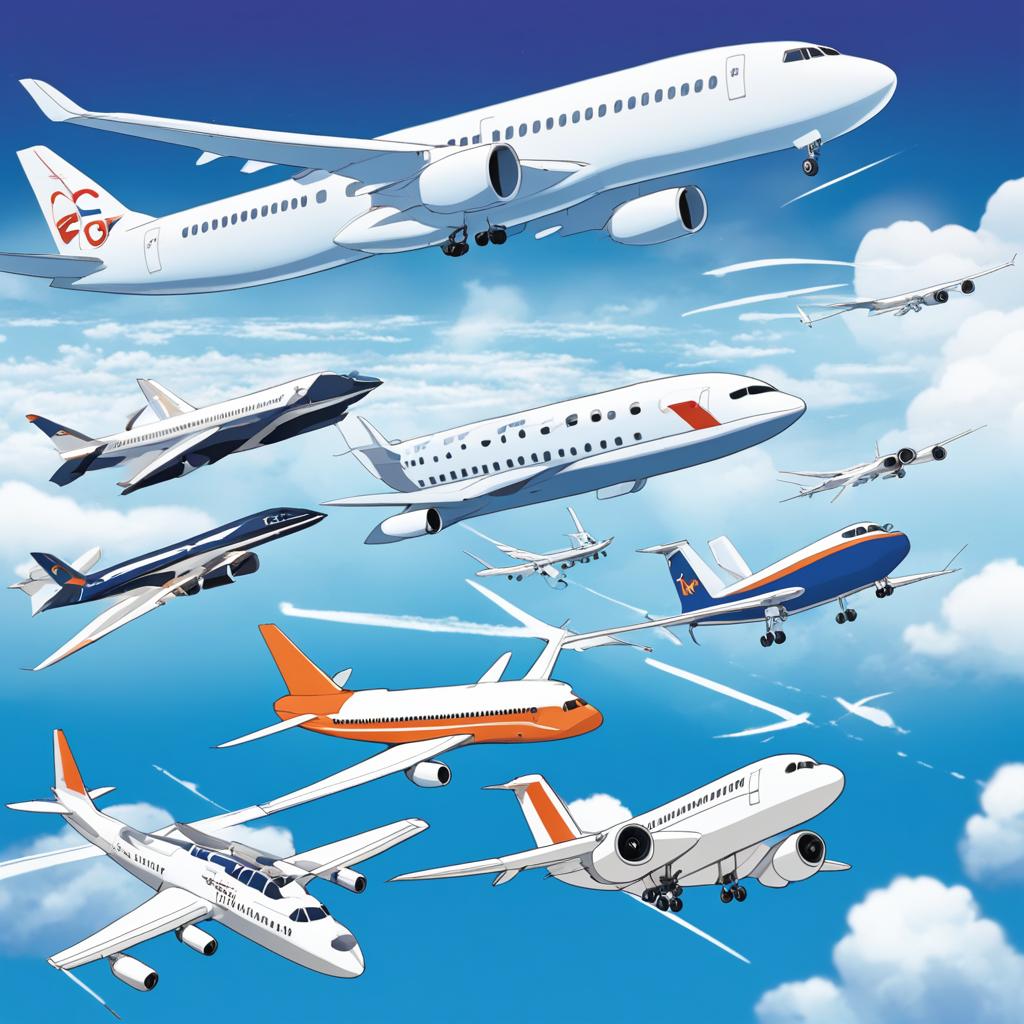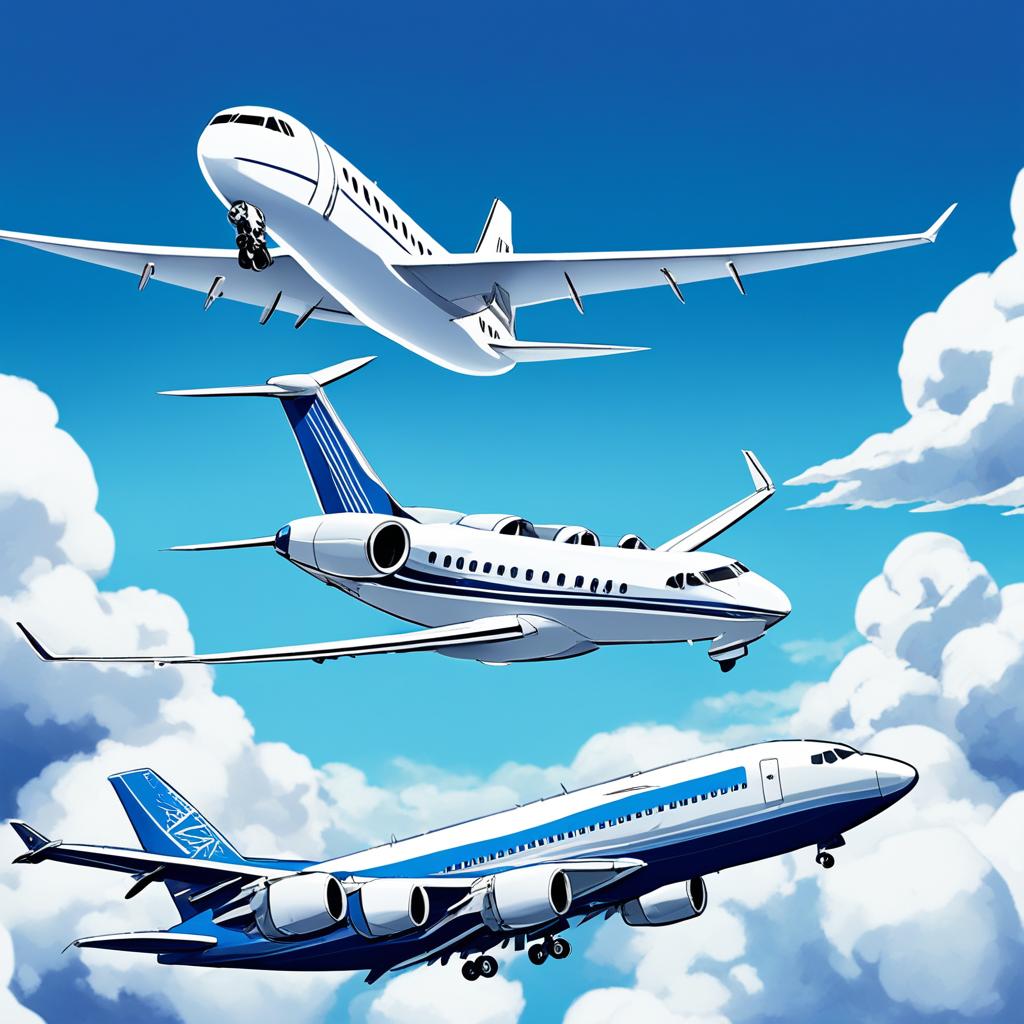Have you ever wondered who has the right-of-way in the skies? When planes converge or approach head-on, which one should alter its course? Is it the bigger aircraft or the one that is already on its final approach? Let’s dive into the world of aviation protocol and unravel the mysteries of plane priority.
Aviation protocol dictates that priority must be given to certain situations and aircraft, ensuring safety and smooth operations in the crowded skies. From distress signals to landing priorities, the rules may challenge common beliefs and could be more intricate than you think.
Right-of-Way Rules According to FAA

When it comes to determining priority in the skies, the Federal Aviation Administration (FAA) has established clear right-of-way rules for aircraft. These rules ensure safe and efficient operations, allowing pilots to navigate the airspace with confidence.
One fundamental rule is that an aircraft in distress always has the right-of-way over other air traffic. This ensures that emergency situations receive the necessary attention and assistance they require.
Another important rule applies when aircraft of the same category are converging at the same altitude. In this scenario, the aircraft to the right has the right of way. This helps maintain order and avoid potential collisions.
Different categories of aircraft also have specific rules for right of way. Pilots must be familiar with these regulations to navigate appropriately in various scenarios.
When two aircraft are approaching each other head-on, both pilots must alter course to the right. This ensures a clear path for both aircraft, reducing the risk of a collision.
Similarly, when one aircraft is overtaking another, the overtaking aircraft must give way by altering course to the right. This ensures a safe and smooth passing maneuver.
Aircraft on final approach or landing have the right of way over other airborne aircraft. This ensures a clear path for landing and reduces the risk of interference during a critical phase of flight.
When multiple aircraft are approaching the same airport, the lower aircraft has the right of way. This helps maintain a logical flow of traffic and minimizes the risk of conflicting routes.
It’s important to note that the right-of-way rules are applicable regardless of whether the flight is conducted under visual flight rules (VFR) or instrument flight rules (IFR). These rules prioritize safety and efficiency over VFR/IFR status.
Furthermore, the FAA also has specific right-of-way rules for aircraft operating on water, requiring them to yield to vessels and other aircraft with right-of-way.
Understanding and adhering to these FAA right-of-way rules is crucial for pilots to maintain safe operations in the airspace. By following these regulations, pilots can navigate with confidence and reduce the risk of incidents or accidents.
Right-of-Way Rules According to ICAO

When it comes to determining right-of-way in aviation, international standards are established by the International Civil Aviation Organization (ICAO). These rules ensure safe and orderly air travel for aircraft from different countries and regions.
One fundamental principle of ICAO right-of-way rules is that the aircraft with the right-of-way must maintain its heading and speed. This allows for predictable and consistent maneuvering in the airspace, reducing the risk of collision.
Aircraft must also adhere to the principle of not passing over, under, or in front of another aircraft unless well clear. This emphasizes the importance of maintaining safe separation distances to avoid potential conflicts.
When two aircraft are approaching each other head-on, both aircraft must alter their heading to the right. This simultaneous alteration of course ensures that both pilots take necessary action to avoid any potential collision.
In the case of converging aircraft at the same level, the aircraft on the right has the right of way. This enables clear guidelines for pilots to determine who should yield when two aircraft are on intersecting paths.
It’s important to note that different categories of aircraft have specific rules for right of way. These categories include everything from commercial airliners to general aviation aircraft and helicopters. By establishing these specific rules, ICAO aims to minimize confusion and promote safe decision-making among pilots.
When one aircraft is overtaking another, the overtaking aircraft must keep clear and alter its heading to the right. This ensures that the overtaken aircraft is not compromised and maintains its role as the primary aircraft in the airspace.
ICAO right-of-way rules also address the priority for landing, takeoff, and taxiing. Specific procedures and guidelines are in place to ensure the smooth flow of traffic at airports and heliports, preventing any potential conflicts on the ground.
It’s worth mentioning that while ICAO sets international standards, individual countries and regions may have additional or modified regulations for right-of-way in aviation. For example, the European Union has its own set of regulations that are consistent with ICAO standards but tailored to the European aviation environment.
Right-of-Way Rules for Specific Aircraft Categories

When it comes to right-of-way rules in aviation, different aircraft categories have their own set of guidelines. Understanding these rules is crucial for maintaining safety and order in the skies.
In the case of balloons, they are given the right-of-way over any other category of aircraft. This is because balloons are considered more vulnerable due to their lack of maneuverability and reliance on wind currents.
On the other hand, gliders have the right-of-way over airships, powered parachutes, weight-shift-control aircraft, airplanes, and rotorcraft. The lighter and less powered nature of gliders necessitates this hierarchy to prevent potential collisions.
Similarly, airships have the right-of-way over powered parachutes, weight-shift-control aircraft, airplanes, and rotorcraft. Airships usually operate at higher altitudes and have limited maneuvering capabilities, warranting their priority in the airspace.
Additionally, aircraft involved in towing or refueling other aircraft are given the right-of-way over all other engine-driven aircraft. This ensures that the aircraft being assisted can carry out their operations safely and without disruption.
Right-of-Way Rules for Specific Aircraft Categories
| Aircraft Category | Right-of-Way |
|---|---|
| Balloons | Over any other category of aircraft |
| Gliders | Over airships, powered parachutes, weight-shift-control aircraft, airplanes, and rotorcraft |
| Airships | Over powered parachutes, weight-shift-control aircraft, airplanes, and rotorcraft |
| Aircraft Towing/Refueling | Over all other engine-driven aircraft |
By adhering to these right-of-way rules, pilots can ensure smooth and safe interactions between different aircraft categories, minimizing the risk of accidents and promoting efficient airspace management.
Right-of-Way Rules for Small Unmanned Aircraft
When operating small unmanned aircraft, it is crucial to understand and adhere to the right-of-way rules to ensure safe and collision-free flights. Small unmanned aircraft, such as drones, must always yield the right of way to all other aircraft, airborne vehicles, and launch/reentry vehicles. This prioritization is essential in maintaining airspace safety and preventing potential accidents.
In order to avoid collision hazards, small unmanned aircraft must never pass over, under, or ahead of other aircraft unless there is a safe and clear distance between them. It is of utmost importance to maintain a respectful distance to ensure the visibility of other aircraft and minimize the risk of accidents.
Additionally, small unmanned aircraft should never operate in close proximity to another aircraft. This is to prevent any potential collision hazards and to respect the right-of-way of larger, manned aircraft. It is crucial for all drone operators to prioritize safety and follow these guidelines to prevent any unnecessary risks or accidents during their flights.
Furthermore, when a small unmanned aircraft is approached by an overtaking aircraft from the rear on a specific angle, the overtaken aircraft always has the right-of-way. Drone operators must be aware of their surroundings and be prepared to yield to other aircraft when necessary.
It is worth noting that specific right-of-way rules also apply during landing, takeoff, and taxiing of small unmanned aircraft. These rules are designed to ensure the safe and efficient operation of drones in various flight scenarios.
By understanding and following these right-of-way rules, drone operators can contribute to a safer and more harmonious airspace environment, minimizing the risk of collisions and promoting responsible and considerate drone use.
FAQ
Q: Which aircraft has priority in aviation?
A: An aircraft in distress has the right-of-way over all other traffic. When aircraft of the same category are converging at approximately the same altitude, the aircraft to the right has the right of way. If the aircraft are of different categories, refer to the specific right-of-way rules for precedence.
Q: What are the right-of-way rules according to the FAA?
A: According to the FAA, when two aircraft are approaching head-on, both pilots must alter course to the right. The overtaking aircraft must give way by altering its course to the right. Aircraft on final approach or landing have the right of way over other airborne aircraft. When two or more aircraft are on final approach, the lowest aircraft has the right of way. VFR or IFR status does not affect the right of way. Additionally, each person operating an aircraft on the water must give way to vessels and other aircraft with right-of-way. Formation flights also have the right of way in certain circumstances.
Q: What are the right-of-way rules according to ICAO?
A: According to ICAO, when two aircraft are approaching head-on, both aircraft must alter their heading to the right. Converging aircraft at the same level should give way to the aircraft on their right. When one aircraft is overtaking another, the overtaking aircraft must keep clear and alter its heading to the right. Rules for landing and takeoff prioritize the aircraft on final approach or landing. VFR or IFR status does not affect the right of way.
Q: What are the right-of-way rules for specific aircraft categories?
A: Specific aircraft categories have their own right-of-way rules. Balloons have the right of way over any other category of aircraft. Gliders have the right of way over airships, powered parachutes, weight-shift-control aircraft, airplanes, or rotorcraft. Airships have the right of way over powered parachutes, weight-shift-control aircraft, airplanes, or rotorcraft. Aircraft towing or refueling other aircraft have the right of way over all other engine-driven aircraft.
Q: What are the right-of-way rules for small unmanned aircraft?
A: Small unmanned aircraft must yield the right of way to all other aircraft, airborne vehicles, and launch/reentry vehicles. They must not pass over, under, or ahead of other aircraft unless well clear. Small unmanned aircraft must not operate close to another aircraft to avoid collision hazards. Separate rules apply for landing, takeoff, and taxiing of small unmanned aircraft.
